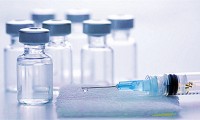-
Four innovative pharmaceutical companies have completed a new round of financing! 3 from China
- Source: drugdu
- 52
- November 13, 2024
-
Consumer healthcare leaders collectively stagnate
- Source: drugdu
- 48
- November 13, 2024
-
Pfizer increases investment in innovative drug research and development in China
- Source: drugdu
- 54
- November 12, 2024
-
Pharma’s capital operation era
- Source: drugdu
- 47
- November 11, 2024
-
Invest 7.5 billion yuan in 5 years! Pfizer increases investment in innovative drug research and development in China
- Source: drugdu
- 79
- November 9, 2024
-
Cytokines
- Source: drugdu
- 65
- November 7, 2024
-
MNCs in China, looking for a new era of survival philosophy
- Source: drugdu
- 68
- November 7, 2024
-
5 innovative drugs included in breakthrough treatment varieties
- Source: drugdu
- 70
- November 6, 2024
-
COVID-19 drugs have become a “dark horse”
- Source: drugdu
- 47
- November 5, 2024
your submission has already been received.
OK
Subscribe
Please enter a valid Email address!
Submit
The most relevant industry news & insight will be sent to you every two weeks.













